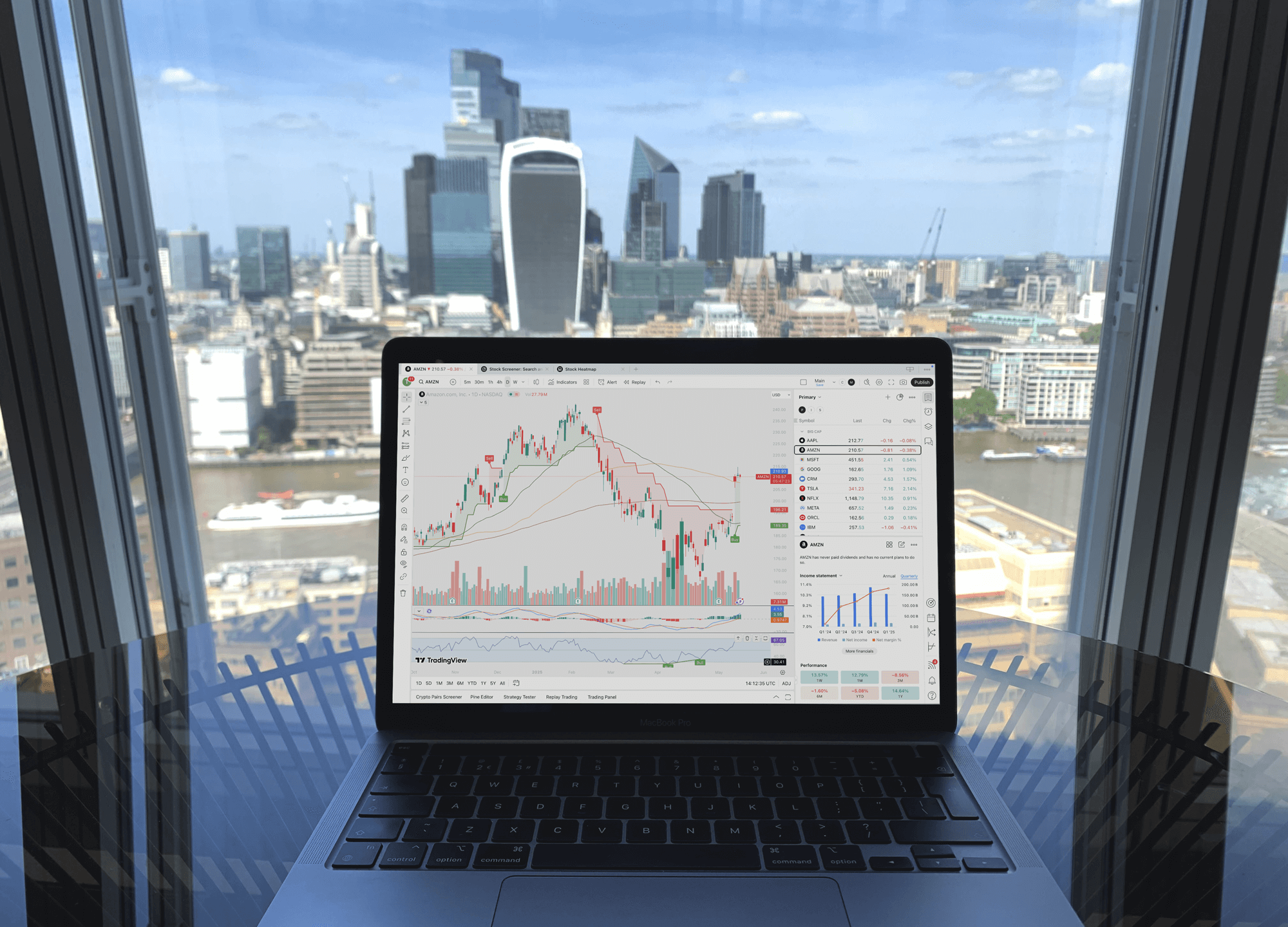Benefits
12%
overall cost savings15%
reduction in web server costs on Graviton320%
lower latency in database queries at peak volume on Graviton4Overview
TradingView helps more than 100 million investors around the world find trading opportunities and make informed decisions across global markets. When the company undertook an organization-wide cost-optimization effort, it looked to Amazon Web Services (AWS) for cost-efficient solutions that would maintain the performance of its service.
TradingView ran its compute workloads using Amazon Elastic Compute Cloud (Amazon EC2), which provides secure and resizable compute capacity for virtually any workload. The company was able to further optimize costs while maintaining performance by migrating the majority of its workloads to AWS Graviton processors, custom-designed server processors developed by AWS that provide the best price performance for cloud workloads running on Amazon EC2.
As a result of migrating its workloads to Graviton, TradingView has improved its price performance, saving money on compute-heavy workloads while delivering a fast, reliable experience for its users globally.

About TradingView
TradingView has ranked number one in the world among investing websites (by Similarweb.com data) since 2021. It’s a charting and trading platform used by more than 100 million investors to chart, chat, and trade financial markets.
Opportunity | Migrating Workloads Seamlessly to AWS Graviton for Multiple Teams at TradingView
As of May 2025, TradingView ranks as the world’s most popular investing website on Similarweb.com, where it has held the top position since 2021. Founded in 2011, the company makes global financial research accessible to more than 100 million investors every day. In addition, it provides a social network for traders to chat, share ideas, and explore markets together.
In 2023, the company began an effort to optimize costs while maintaining the performance and reliability of its platform. Previously, TradingView ran 99 percent of its workloads—including databases, web servers, messaging queues, and caches—using x86-based processors.
TradingView saw an opportunity to improve price performance on AWS—specifically Graviton, which delivers exceptional price-performance benefits. “When we looked for areas to optimize, Graviton emerged as one of the most promising opportunities,” says Rustam Aliyev, technical program manager at TradingView. “Our estimates showed that we could save up to 14 percent on compute costs by migrating to Graviton.”
The company’s compute workloads are critical to providing a stable experience for users, handling everything from powering the web services to running the underlying databases. To prioritize business continuity and productivity, TradingView modified its build system to support multiarchitecture builds so that all components would work on both x86- and Arm-based architectures. Then, the company gave multiple teams the freedom to migrate workloads at their own pace.
More importantly, TradingView did not encounter any downtime, nor was there disruption to its service as it migrated to Graviton. “We provided our teams with the necessary tools and environments where they could safely test their workloads and migrate them when they were ready,” says Aliyev. “By doing this, we could complete the migration without disturbing the rest of the business.”
Solution | Improving Price Performance Using Graviton
Within 1 year, TradingView had migrated 70 percent of its workloads to Graviton. “The migration went quite smoothly,” says Aliyev. “Most of our applications already natively supported Arm-based architecture, so there weren’t any issues.” The company communicated with its AWS solutions architect and other members of the AWS team as it migrated its infrastructure. “The AWS team has been very supportive throughout the journey,” says Aliyev. “When we had questions, the team helped us find the answers, and they helped us make sure that we had the tools and everything we needed to move forward.”
TradingView tested each workload that it migrated on Graviton to determine which processors would be the best fit. For some workloads, Graviton2 provided better cost-efficiency, while others required a different balance of price and performance. TradingView migrated its heaviest workloads—such as its major databases—to Graviton4. Just 1 week after the migration, significant market turbulence put the migrated infrastructure to the test as the volume of users on the site increased significantly. Despite 20 percent more requests per second during this period, TradingView saw an immediate benefit of running on Graviton4: The database server kept delivering requests with a 20 percent lower latency under peak usage. The lower latency contributes to a better experience for users who want the most up-to-date information as quickly as possible.
TradingView also improved the price performance of its web servers. In just 3 months, the company migrated those servers from a mix of instances to Graviton3-based instances, reducing costs by 15 percent. With 70 percent of its workloads running on Graviton, TradingView is optimizing its costs while enhancing performance for crucial parts of its service. “Critical backend services supporting our platform, including our mobile, desktop, and web applications, are powered by workloads running on AWS,” says Aliyev.
Outcome | Reinvesting Savings to Continue Innovating
Overall, TradingView is saving 12 percent on compute costs by using Graviton processors. The company is reinvesting its cost savings, using them to test innovative technologies that will further improve its service. For example, TradingView is exploring the benefits of implementing large language models in its application using Amazon Bedrock, a fully managed service that offers a choice of high-performing foundation models.
After seeing the benefits it has achieved by migrating to Graviton, TradingView plans to continue optimizing its infrastructure on AWS. The company will migrate the remaining workloads gradually, with the goal of running 90 percent of its workloads on Graviton. And it’s using Graviton by default for any new services that it launches.
“The biggest win is that we hit our cost goal,” says Aliyev. “We save about 12 percent using Graviton, which really helps in optimizing costs across our infrastructure.”

The biggest win is that we hit our cost goal. We save about 12 percent using Graviton, which really helps in optimizing costs across our infrastructure.
Rustam Aliyev
Technical Program Manager, TradingViewAWS Services Used
Did you find what you were looking for today?
Let us know so we can improve the quality of the content on our pages.